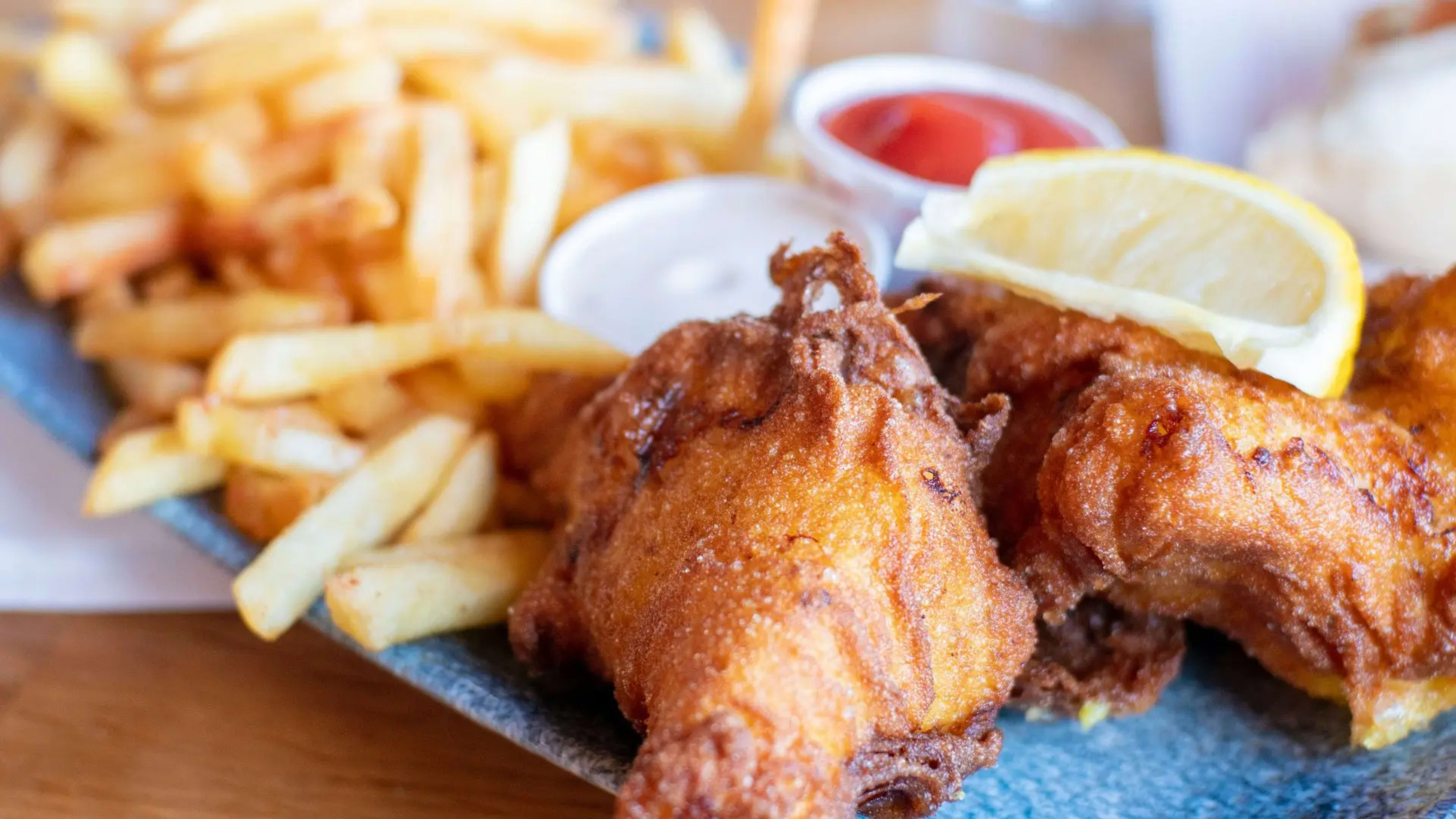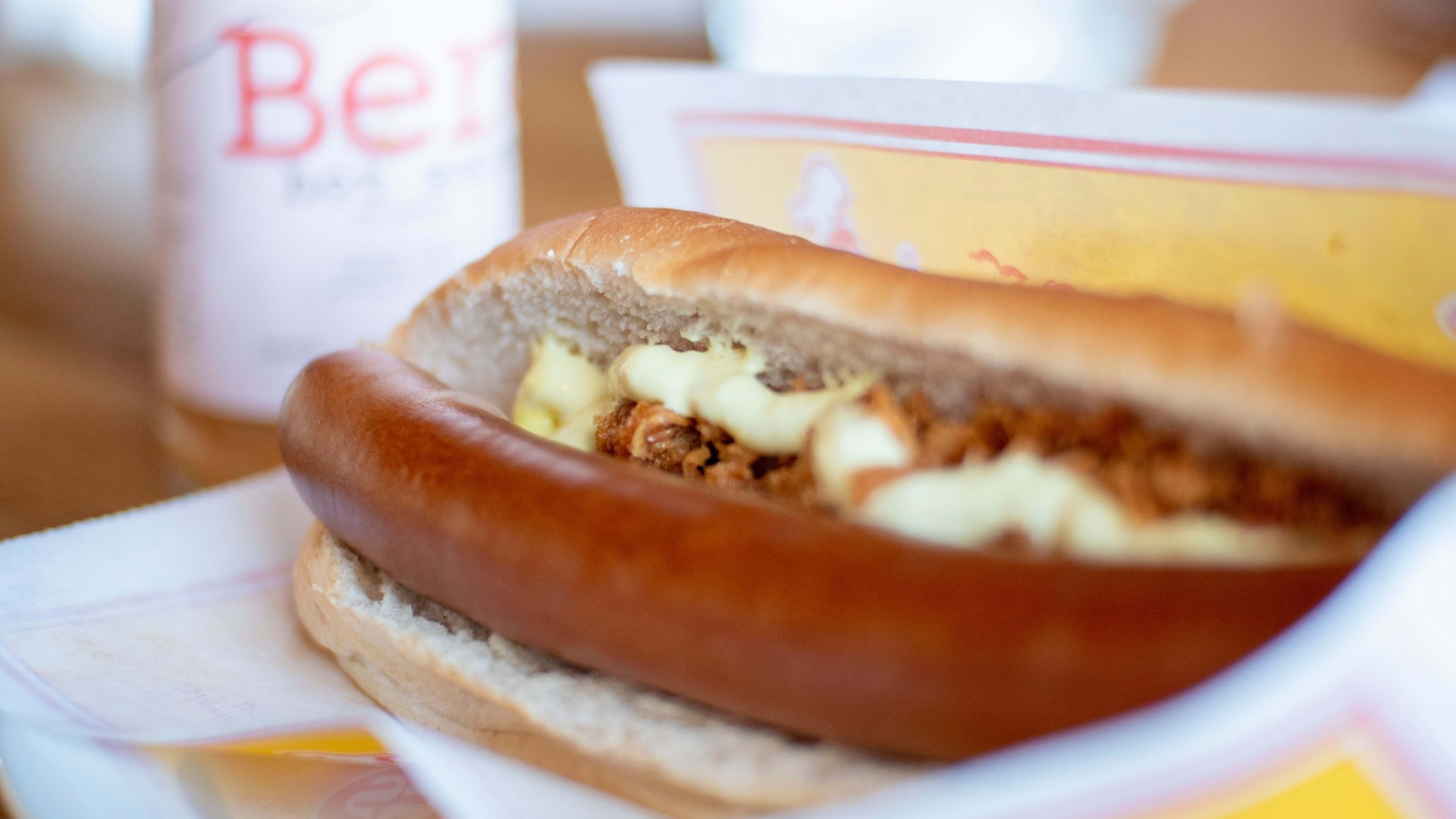In recent years, indoor food halls have sprung up all over. These are often the best places to get tasty, fresh food made from Icelandic ingredients at a decent price. Whether you’re looking to sample the local cuisine or want a taste from home, you’re bound to find what you’re after.
- Find the hottest places to eat in our Iceland restaurant guide.
Icelandic cuisine
Pure, high-quality produce
As Iceland is an island nation, seafood has always been at the heart of Icelandic cuisine. Fish such as cod, haddock, salmon, brown trout, and Arctic char are all popular and available fresh-caught.

Iceland is also famous for its lamb. Sheep basically roam wild around the country, grazing on grass in the fields and mountains.
As in other Nordic countries, dairy products are extremely popular. Icelanders turn their high-quality milk from free-range cows into butter, cream, cheese, yogurt, and (of course) skyr. This is a thick, yogurt-like product that’s technically a cheese. Low in fat and high in protein, it’s good for you and tasty to boot.
What surprises many people are the locally grown vegetables. Thanks to their geothermal resources, Icelanders are able to cultivate tomatoes, cucumbers, bell peppers, lettuce, and more indoors, all year round.
- Discover the best restaurants in Reykjavík.
Traditional Icelandic food
- Lambalæri – Roast leg of lamb is very popular in Iceland. Lamb is the country’s most abundant meat. Thanks to a life of free roaming on grassy pastures and hillsides, it’s high-welfare, tastes incredible, and can be eaten rare
- Plokkfiskur – This is a traditional gratin of white fish, such as cod or haddock, and mashed potato. It’s homely, filling, and incredibly tasty (especially the crispy bits on top). Traditionally served on slices of sweet Icelandic rye bread.
- Hamborgarhryggur – Roast pork is an example of the Danish influence on Icelandic cuisine. This is a special dish traditionally eaten at Christmas, served with caramelized potatoes, red cabbage, and brown gravy.

- Pylsa – The humble hot dog, known locally as pylsa or pulsa, is a favorite of many Icelanders. What makes the Icelandic one different is the condiments, as well as the inclusion of lamb in the sausage. Ask for eina með öllu (pronounced EY-na meth uht-loo) for one with everything: crispy onion, raw onion, ketchup, brown mustard, and remoulade.
- Kleina – This is the Icelandic take on the doughnut, although instead of being ring-shaped, they are knotted. Best from a bakery dusted with cinnamon sugar.
Þorramatur (the gross stuff)

You may well have heard about unusual foods from Iceland, such as rotten shark or even whale meat. Whilst these are certainly not eaten every day by Icelanders, they are enjoyed by some during the festival of Þorrablót.
This celebration of Viking-age cuisine is held in January or February. At a Þorrablót buffet, you might expect to see the following:
- Kæstur hákarl – rotten shark with a strong ammonia smell
- Harðfiskur – wind-dried white fish, normally eaten with butter
- Svið – half a seared and boiled sheep’s head, served with the eye
- Hrútspungar – pressed sheep’s testicles served in jelly
- Lifrarpylsa – a liver sausage containing lamb
- Blóðmör – similar to black pudding
- Hangikjöt – slices of smoked lamb eaten on flatbread
Whilst most of this is only really for the adventurous, hangikjöt and harðfiskur are more everyday foods that many visitors to Iceland enjoy. We definitely recommend trying these!
- Eat your way around Reykjavík on a multi-day tour of Iceland.
